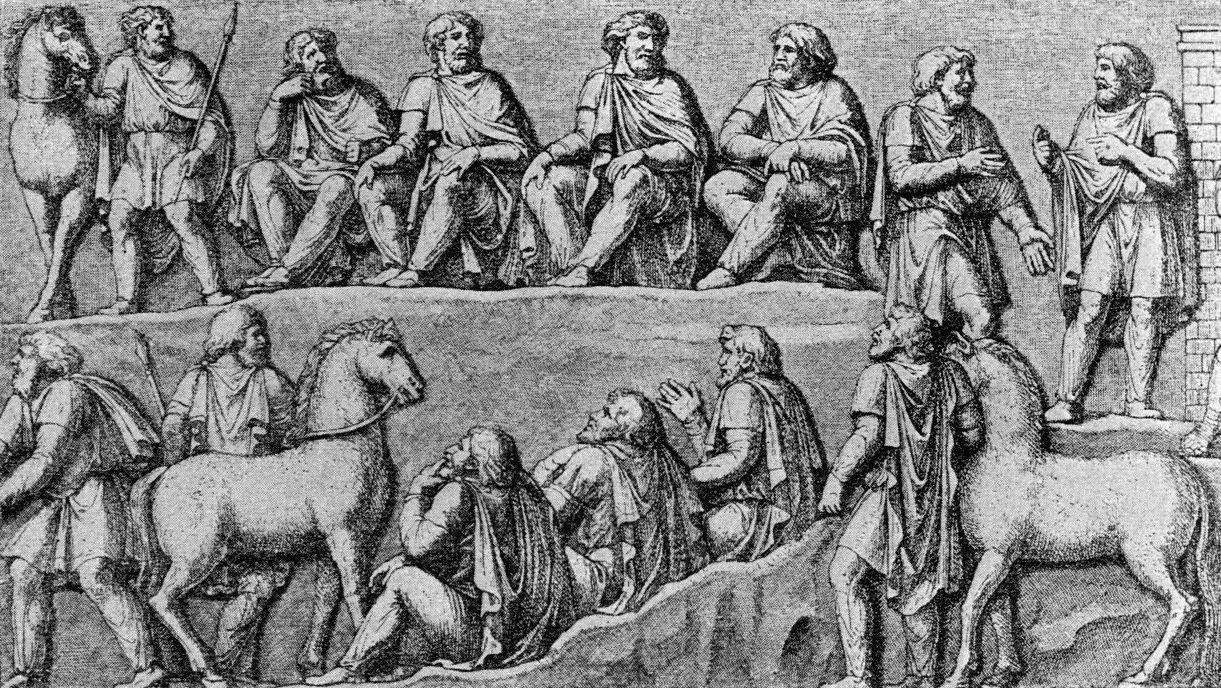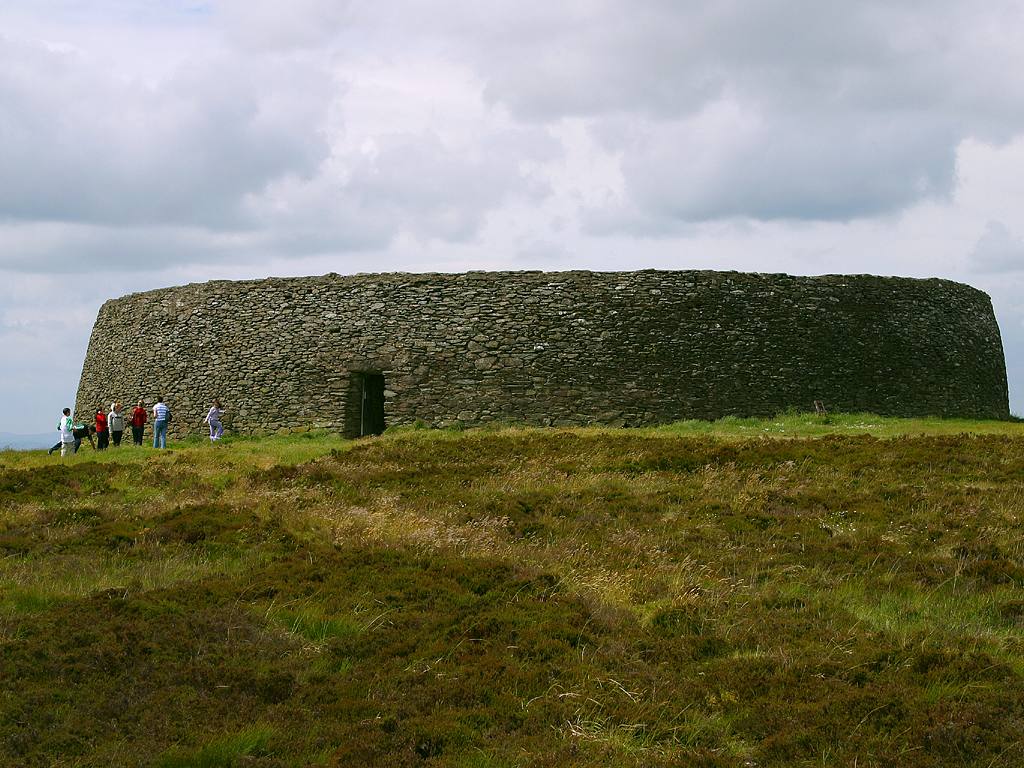|
ГћorgnГЅr The Lawspeaker
Torgny the Lawspeaker ( Old Icelandic: ''ГћorgnГЅr lГ¶gmaГ°r'' , Swedish: ''Torgny Lagman'') is the name of one of at least three generations of lawspeakers by the name ''ГћorgnГЅr'', who appear in the ''Heimskringla'' by the Icelandic scholar and chieftain Snorri Sturluson, and in the less known ''Styrbjarnar ГѕГЎttr SvГakappa'' and '' HrГіa ГѕГЎttr heimska''. They were the lawspeakers of Tiundaland, and all lawspeakers in the Swedish kingdom were their subordinates. The one who is the most famous is reported by the ''Heimskringla'' to have lived in the time of Olof SkГ¶tkonung and Olav the Holy, and there is an extensive account on him in this source. This ГћorgnГЅr is held to have historic basis, but Snorri's account is doubted by modern Swedish historians,Lagerquist 1997:36 who lack native Swedish documentation on the Tiundaland lawspeakers of this time. Snorri relates: : ''In Tiundaland there was a lagman'' lawspeaker">/nowiki>lawspeaker''who was called Thorgny, whose f ... [...More Info...] [...Related Items...] OR: [Wikipedia] [Google] [Baidu] |
Olav Den Helliges Saga CK5
Olaf or Olav (, , or British ; ) is a Dutch, Polish, Scandinavian and German given name. It is presumably of Proto-Norse origin, reconstructed as ''*Anu-laibaz'', from ''anu'' "ancestor, grand-father" and ''laibaz'' "heirloom, descendant". Old English forms are attested as ''ЗўlДЃf'', ''AnlДЃf''. The corresponding Old Novgorod dialect form is ''Uleb''. A later English form of the name is ''Olave''. In the Norwegian language, ''Olav'' and ''Olaf'' are equally common, but Olav is traditionally used when referring to Norwegian royalty. The Swedish form is '' Olov'' or ''Olof'', and the Danish form is ''Oluf''. It was borrowed into Old Irish and Scottish Gaelic with the spellings ''AmlaГb'' and ''Amhlaoibh'', giving rise to modern version ''Aulay''. The name is Latinized as ''Olaus''. Notable people North Germanic Denmark *Olaf I of Denmark, king 1086–1095 *Olaf II of Denmark, also Olaf IV of Norway * Oluf Haraldsen (died c. 1143), Danish nobleman who ruled Scania for a few ... [...More Info...] [...Related Items...] OR: [Wikipedia] [Google] [Baidu] |
Thing (assembly)
A thing, also known as a folkmoot, assembly, tribal council, and Thing (assembly)#Etymology, by other names, was a governing assembly in early Germanic peoples, Germanic society, made up of the free people of the community presided over by a lawspeaker. Things took place regularly, usually at prominent places accessible by travel. They provided legislative functions, as well as social events and trade opportunities. In modern usage, the meaning of this word in English and other languages has shifted to mean not just an assemblage of some sort but simply an object of any kind. Thingstead () or "thingstow" () is the English term for the location where a thing was held. Etymology The word appears in Old Norse, Old English, and modern Icelandic language, Icelandic as , in Middle English (as in modern English), Old Saxon, Old Dutch, and Old Frisian as (the difference between ''Гѕing'' and ''thing'' is purely orthographical), in German language, German as , in Dutch language, Dut ... [...More Info...] [...Related Items...] OR: [Wikipedia] [Google] [Baidu] |
Olaf The Thick
Saint Olaf ( – 29 July 1030), also called Olaf the Holy, Olaf II, Olaf Haraldsson, and Olaf the Stout or "Large", was King of Norway from 1015 to 1028. Son of Harald Grenske, a petty king in Vestfold, Norway, he was posthumously given the title ''Rex Perpetuus Norvegiae'' () and canonised at Nidaros (Trondheim) by Bishop Grimketel, one year after his death in the Battle of Stiklestad on 29 July 1030. His remains were enshrined in Nidaros Cathedral, built over his burial site. His sainthood encouraged the widespread adoption of Christianity by Scandinavia's Vikings/Norsemen. Pope Alexander III confirmed Olaf's local canonisation in 1164, making him a recognised saint of the Catholic Church, and Olaf started to be known as ''Rex Perpetuus Norvegiae'' – ''eternal king of Norway''. Following the Reformation, he was a commemorated historical figure among some members of the Lutheran and Anglican Communions. The saga of Olav Haraldsson and the legend of Olaf the Saint became cen ... [...More Info...] [...Related Items...] OR: [Wikipedia] [Google] [Baidu] |
Eric The Victorious
Eric the Victorious (Old Norse: ''EirГkr inn sigrsГ¦li'', Modern Swedish: ''Erik SegersГ¤ll''; c. 945 – c. 995) was a Swedish monarch as of around 970. Although there were earlier Swedish kings, he is the first Swedish king in a consecutive regnal succession, who is attested in sources independent of each other, and consequently Sweden's list of rulers usually begins with him. His son Olof SkГ¶tkonung, however, is considered the first ruler documented to definitely have been accepted both by the original Swedes around Lake MГ¤laren and by the Geats around Lake VГ¤ttern. Adam of Bremen reports a king named Emund Eriksson before Eric, but it is not known whether he was Eric's father. The Norse sagas' accounts of a BjГ¶rn Eriksson are considered unreliable. Some sources have referred to Eric the Victorious as either King ''Eric V'' or ''Eric VI'', modern inventions by counting backwards from Eric XIV (1560–1568), who adopted his numeral according to a 16th-century work on ... [...More Info...] [...Related Items...] OR: [Wikipedia] [Google] [Baidu] |
Björn (III) Eriksson
Bjorn, Bjorne (English, Dutch), Björn (Swedish, Icelandic, Dutch, and German), Bjørn (Danish, Faroese and Norwegian), Beorn (Old English) or, rarely, Bjôrn, Biorn, or Latinized Biornus, Brum (Portuguese), is a Scandinavian male given name, or less often a surname. The name means "bear" (the animal). In Swedish and Finnish, the nickname Nalle ("teddy bear") refers to Björn. Surname * Claus Bjørn, Danish author, historian, and television and radio broadcaster *Evert Björn, Swedish Olympic athlete * Hugo Björne, Swedish actor * Kristian Bjørn, Norwegian skier * Lasse Björn, Swedish Olympic ice hockey player *Nathalie Björn, Swedish football player *Thomas Bjørn, Danish golfer Given name Acting *Björn Andrésen, Swedish actor and musician *Björn Bjelfvenstam, Swedish actor *Björn Granath, Swedish actor *Björn Gustafsson, Swedish comedian and actor *Björn Gustafson, Swedish actor *Björn Kjellman, Swedish actor and singer *Björn Skifs, Swedish singer and actor Ar ... [...More Info...] [...Related Items...] OR: [Wikipedia] [Google] [Baidu] |
Rampart (fortification)
In fortification architecture, a rampart is a length of Embankment (earthworks), embankment or wall forming part of the defensive boundary of a castle, hillfort, Human settlement, settlement or other fortified site. It is usually broad-topped and made of excavated earth and/or masonry.Friar, Stephen (2003). ''The Sutton Companion to Castles'', Sutton Publishing, Stroud, 2003, p. 241. Darvill, Timothy (2008). ''Oxford Concise Dictionary of Archaeology'', 2nd ed., Oxford University Press, Oxford and New York, p. 376. . Types The composition and design of ramparts varied from the simple mounds of earth and stone, known as dump ramparts, to more complex earth and timber defences (box ramparts and timberlaced ramparts), as well as ramparts with stone revetments. One particular type, common in Central Europe, used earth, stone and timber posts to form a ''Pfostenschlitzmauer'' or "post-slot wall". Vitrified ramparts were composed of stone that was subsequently fired, possibly to ... [...More Info...] [...Related Items...] OR: [Wikipedia] [Google] [Baidu] |
Hillfort
A hillfort is a type of fortification, fortified refuge or defended settlement located to exploit a rise in elevation for defensive advantage. They are typical of the late Bronze Age Europe, European Bronze Age and Iron Age Europe, Iron Age. Some were used in the post-Roman Empire, Roman period. The fortification usually follows the contours of a hill and consists of one or more lines of Earthworks (Archaeology), earthworks or stone Rampart (fortification), ramparts, with stockades or defensive walls, and external ditches. If enemies were approaching, the inhabitants would spot them from a distance. Prehistoric Europe saw a growing population. It has been estimated that in about 5000 BC during the Neolithic between 2 million and 5 million lived in Europe; in the Late Iron Age it had an estimated population of around 15 to 30 million. Outside Greece and Italy, which were more densely populated, the vast majority of settlements in the Iron Age were small, with ... [...More Info...] [...Related Items...] OR: [Wikipedia] [Google] [Baidu] |
Estonia
Estonia, officially the Republic of Estonia, is a country in Northern Europe. It is bordered to the north by the Gulf of Finland across from Finland, to the west by the Baltic Sea across from Sweden, to the south by Latvia, and to the east by Russia. The territory of Estonia consists of the mainland, the larger islands of Saaremaa and Hiiumaa, and over 2,300 other islands and islets on the east coast of the Baltic Sea. Its capital Tallinn and Tartu are the two largest List of cities and towns in Estonia, urban areas. The Estonian language is the official language and the first language of the Estonians, majority of its population of nearly 1.4 million. Estonia is one of the least populous members of the European Union and NATO. Present-day Estonia has been inhabited since at least 9,000 BC. The Ancient Estonia#Early Middle Ages, medieval indigenous population of Estonia was one of the last pagan civilisations in Europe to adopt Christianity following the Northern Crusades in the ... [...More Info...] [...Related Items...] OR: [Wikipedia] [Google] [Baidu] |
Courland
Courland is one of the Historical Latvian Lands in western Latvia. Courland's largest city is Liepāja, which is the third largest city in Latvia. The regions of Semigallia and Selonia are sometimes considered as part of Courland as they were formerly held by the same duke. The literal meaning of the name is "Land of Curonians". Geography and climate Situated in western Latvia, Courland roughly corresponds to the former Latvian districts of Kuldīga, Liepāja, Saldus, Talsi, Tukums and Ventspils. When combined with Semigallia and Selonia, Courland's northeastern boundary is the Daugava River, which separates it from the regions of Latgale and Vidzeme. To the north, Courland's coast lies along the Gulf of Riga. On the west it is bordered by the Baltic Sea, and on the south by Lithuania. It lies between 55° 45′ and 57° 45′ North and 21° and 27° East. The name is also found in the Curonian Spit and Lithuanian ''Karšuvos giria'' - the Courland wood. The area c ... [...More Info...] [...Related Items...] OR: [Wikipedia] [Google] [Baidu] |
Karelia
Karelia (; Karelian language, Karelian and ; , historically Коре́ла, ''Korela'' []; ) is an area in Northern Europe of historical significance for Russia (including the Soviet Union, Soviet era), Finland, and Sweden. It is currently divided between northwestern Russia (the Federal subjects of Russia, federal subjects of the Republic of Karelia and Leningrad Oblast) and Finland (the Regions of Finland, regions of South Karelia, North Karelia, and the eastern portion of Kymenlaakso). Use of name Various regions may be called Karelia. Finnish Karelia is a historical province of Finland and is now divided between Finland and Russia, often called just ''Karjala'' in Finnish. The eastern part of this chiefly Lutheran area was ceded to Russia after the Winter War of 1939–40. The Republic of Karelia is a Russian federal subject, including East Karelia, with a chiefly Russian Orthodox population. Within present-day Finland, ''Karjala'' refers to the Regions of Finland, ... [...More Info...] [...Related Items...] OR: [Wikipedia] [Google] [Baidu] |
Finland
Finland, officially the Republic of Finland, is a Nordic country in Northern Europe. It borders Sweden to the northwest, Norway to the north, and Russia to the east, with the Gulf of Bothnia to the west and the Gulf of Finland to the south, opposite Estonia. Finland has a population of 5.6 million. Its capital and largest city is Helsinki. The majority of the population are Finns, ethnic Finns. The official languages are Finnish language, Finnish and Swedish language, Swedish; 84.1 percent of the population speak the first as their mother tongue and 5.1 percent the latter. Finland's climate varies from humid continental climate, humid continental in the south to boreal climate, boreal in the north. The land cover is predominantly boreal forest biome, with List of lakes of Finland, more than 180,000 recorded lakes. Finland was first settled around 9000 BC after the Last Glacial Period, last Ice Age. During the Stone Age, various cultures emerged, distinguished by differen ... [...More Info...] [...Related Items...] OR: [Wikipedia] [Google] [Baidu] |
Eirik Eymundson
Eric Anundsson or Eymundsson was a semi-legendary Swedish king who supposedly ruled during the 9th century. The Norse sagas describe him as successful in extending his realm over the Baltic Sea, but unsuccessful in his attempts of westward expansion. There is no near-contemporary evidence for his existence, the sources for his reign dating from the 13th and 14th centuries. These sources, Icelandic sagas, are generally not considered reliable sources for the periods and events they describe. Controversially, older Swedish historians have identified Eric with another legendary Swedish king, ''Erik Weatherhat'', who is mentioned in some medieval king-lists as the predecessor of Eric the Victorious. However, Saxo Grammaticus identifies Erik Weatherhat with another figure, a son of the legendary Viking Ragnar Lodbrok. Eric's reign He is given as the son of Anund Uppsale in the '' Hervarar saga'' (13th century): :''EirГkr hГ©t sonr Г–nundar konungs, er rГki tГіk eptir föður sinn ... [...More Info...] [...Related Items...] OR: [Wikipedia] [Google] [Baidu] |







